Dinosaurs, among the most fascinating creatures ever to roam our planet, are usually imagined as gigantic predators occupying the top of the food chain and consuming everything they come across, right? Not entirely. These three common beliefs are somewhat distorted. In fact, dinosaurs were incredibly diverse and have existed for millions of years – a timeframe that far surpasses human history. The most popular dinosaur movie to date, “Jurassic Park,” while gripping, doesn’t accurately portray these prehistoric beings. (Even the title is misleading – the dinos in this film did not live during the Jurassic era!) This collection distinguishes between Hollywood exaggerations and disproves outdated textbook misconceptions, providing genuine dinosaur facts and correcting common misinterpretations about these mammoth creatures. Have you ever heard that dinosaurs were dim-witted and slow? (They weren’t.) Or that a meteor impact completely annihilated all dinosaurs? (That’s not completely true.) If you’re a burgeoning paleontologist or a fan of “The Flintstones”, you might find a dinosaur myth in this list that might surprise you. Continue reading to see if you subscribe to any of these 25 dinosaur myths that might need rethinking.

Dinosaurs and humans lived at the same time
 Source: Smithsonian, Image: truentertainments.deviantart.com
Source: Smithsonian, Image: truentertainments.deviantart.com A common false dinosaur fact coming from the world of science-fiction, dinosaurs actually never coexisted with humans. The last dinosaur died out 62 million years before our first recognizable hominid ancestor appeared on Earth.
Jurassic Park will be a reality once we master cloning
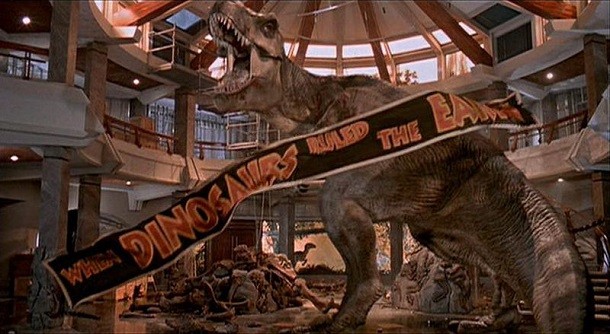 Source: University of Alberta, Image: jayceeloop via Flickr
Source: University of Alberta, Image: jayceeloop via Flickr One of the most commonly accepted dinosaur myths is that we will be able to clone and propagate dinosaurs once we get better at cloning. Not true! DNA has a fragile structure and breaks down soon after a creature’s death – and surely after 62 million years. So, sadly for all the “Jurassic Park” fans, it seems as though we won’t be having Disney-owned dino theme parks.
Archaeologists study dinosaurs
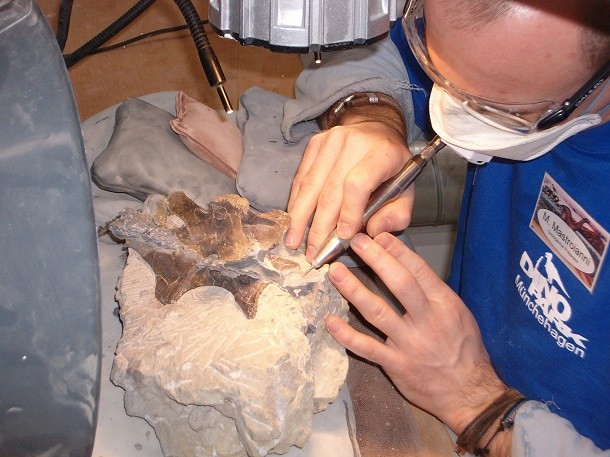 Source: Smithsonian, Image: Wikipedia
Source: Smithsonian, Image: Wikipedia Archaeologists do study the past and they do plenty of digging, but they don’t study dinosaurs – they study humans (and some study animals and their relationships with humans) over the past three to four million years. Paleontologists are the scientists who study dinosaurs through paleontology: the study of fossils to learn about life in previous geological periods.
Some dinosaurs could fly
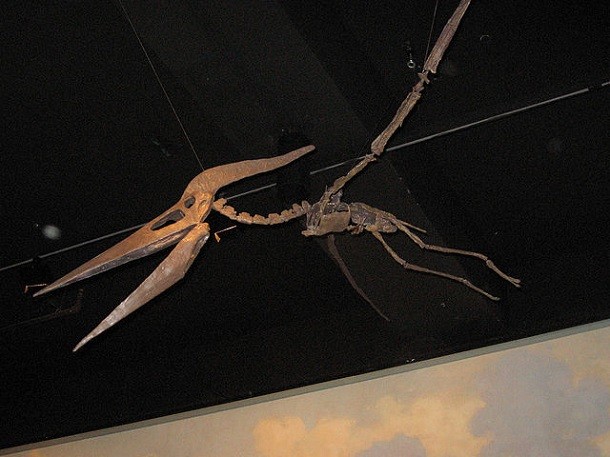 Source: University of Alberta, Image: Wikimedia
Source: University of Alberta, Image: Wikimedia Again, nope! When we think of dinosaurs, we often think of the Pterodactyl or Ichthyosaur, but they’re not even dinos. The earliest vertebrates scientists have identified as developing powered flight, Pterosaurs were reptiles but not dinosaurs.
All dinosaurs lived at the same time
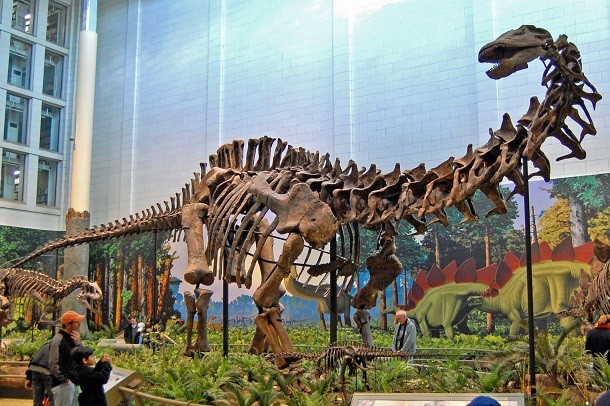 Source: Smithsonian, Image: Wikipedia
Source: Smithsonian, Image: Wikipedia Though dino-shows would make us think all known-dinosaurs lived together during the same time period, this is a major dinosaur myth! The famous Tyrannosaurus and Brontosaurus (now identified as Apatosaurus) lived 65 million years apart, further apart than the last dinosaurs and the first humans.
An asteroid strike killed off the thriving dinosaurs
 Source: Smithsonian, Image: Wikipedia
Source: Smithsonian, Image: Wikipedia This commonly-held dinosaur myth is heavily debated by paleontologists. Though it’s mostly accepted that the asteroid strike wiped out the last of the dinosaurs, some scientists believe dinosaurs had already been declining for many millennia.
Dinosaurs were all scaly
 Source: University of Alberta, Image: Wikipedia
Source: University of Alberta, Image: Wikipedia Despite our images of the T-Rex and Stegosaurus, not all dinosaurs were scale-covered, hulking beasts. The past two decades of paleontological research has unearthed numerous dinosaur species which were covered in feathers. Despite their feathers, they were flightless, likely using them for insulation or in mating rituals.
Dinosaurs were weak, easily extinctable creatures
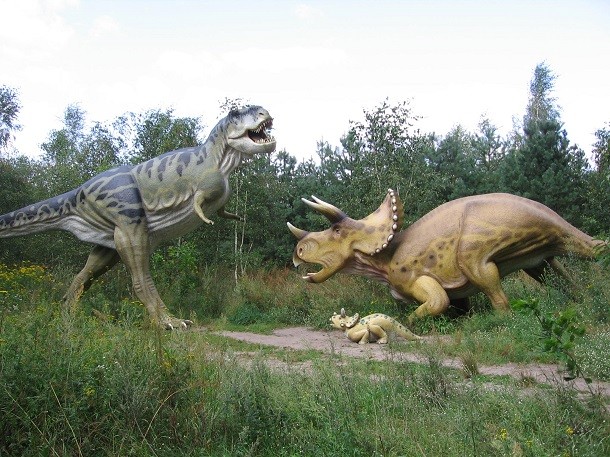 Source: Smithsonian, Image: Wikipedia
Source: Smithsonian, Image: Wikipedia Not so! Dinosaurs hold the record for dominating the planet longer than any other land animal. Ruling over 150 million years, dinosaurs were masters of adaption and evolution.
Dinosaurs were stupid
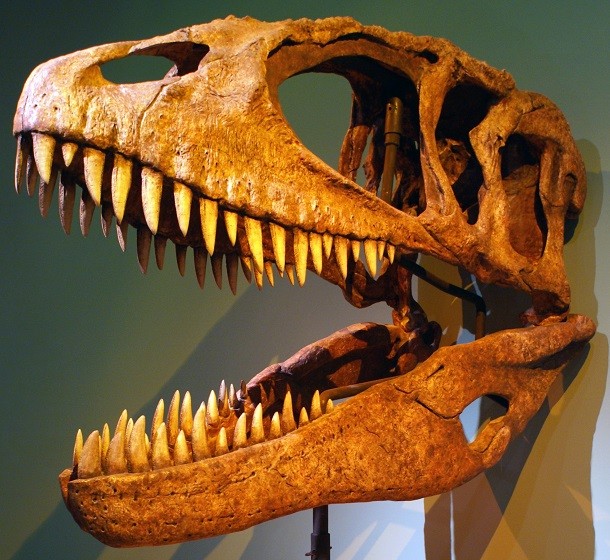 Source: Dr. Dave Hone via The Guardian, Image: Wikipedia
Source: Dr. Dave Hone via The Guardian, Image: Wikipedia Those who believe dinosaurs were evolutionarily weak also tend to think the creatures were pretty stupid. Paleontologists aren’t too on-board with this assumption. Though intelligence is hard to determine (especially for such ancient creatures), scientists have found examples of parenting, social behavior, and group living among dinosaurs. And many species even have brains quite large for their size.
Dinosaurs were warm- or cold-blooded
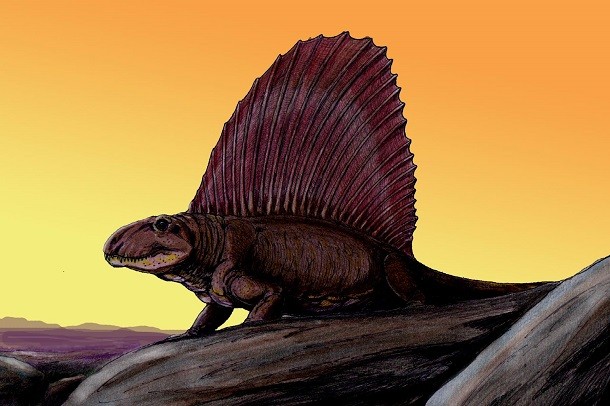 Source: Smithsonian, Image: Wikipedia
Source: Smithsonian, Image: Wikipedia Though the animals we’re familiar with today are either warm- or cold-blooded, the same doesn’t apply to dinos! Paleontologists have found dinosaurs from the Mesozoic Period were neither warm- nor cold-blooded; rather, their being “dinosaur-blooded” was a unique form of body heating and cooling that appears to have changed with the dinosaur’s metabolism over its lifetime.
Dinosaurs lived in warm climates
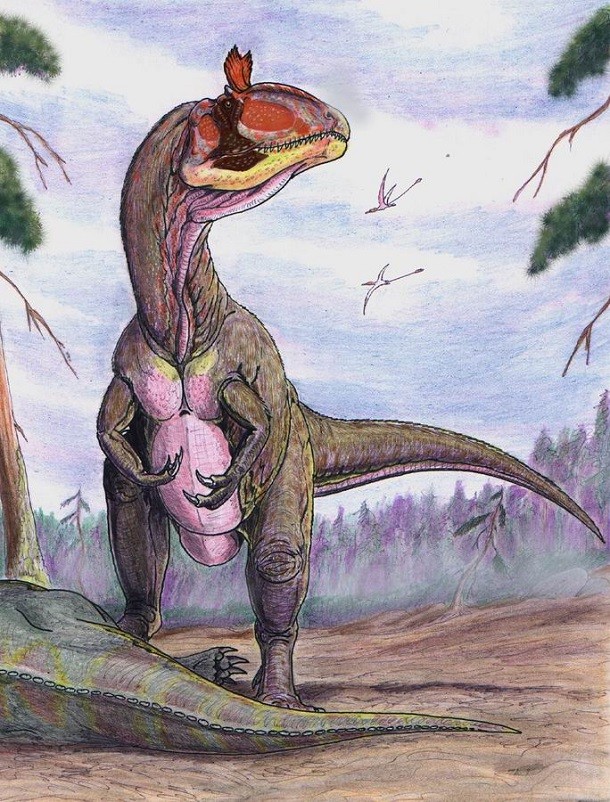 Source: University of Alberta, Image: Wikimedia
Source: University of Alberta, Image: Wikimedia A recently dug-up Cryolophosaurus fossil in the South Pole is proving that dinosaurs lived and thrived even in freezing polar regions. Near to this fossil, paleontologists found numerous other partial dinosaur skeletons.
Dinosaurs had hind-brains
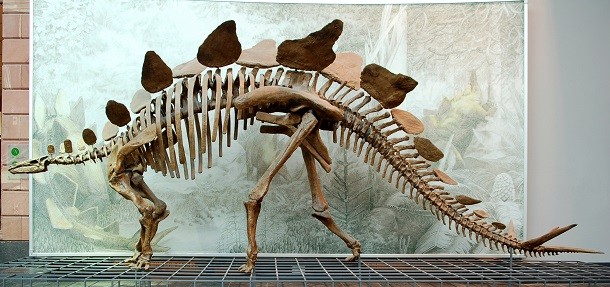 Source: Dr. Dave Hone via The Guardian, Image: Wikipedia
Source: Dr. Dave Hone via The Guardian, Image: Wikipedia Paleontologist Charles Marsh found a wide cavity in the hip-area of various dinosaurs’ spinal canals which he speculated as the location of a rear, second brain. This dinosaur assumption has since been disproven; many vertebrates, including us humans, have an enlarged nerve cluster at the base of our spines.
All prehistoric reptiles were dinosaurs
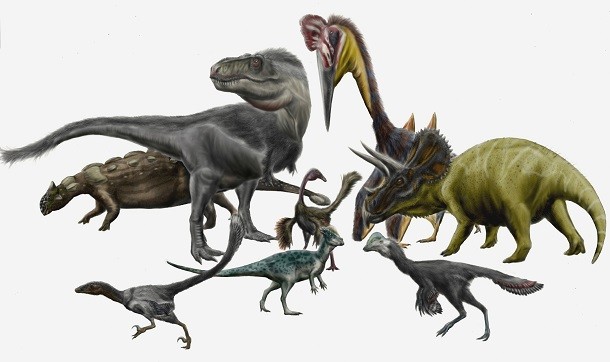 Source: Smithsonian, Image: Wikipedia
Source: Smithsonian, Image: Wikipedia Though many people think “dinosaur” is the name for any reptile which walked the Earth before the appearance of humans, only about 10% of reptiles in the Mesozoic Era were actually dinosaurs.
Dinosaurs were terrors for mammals
 Source: University of Alberta, Image: riverap1 via Flickr
Source: University of Alberta, Image: riverap1 via Flickr While dinosaurs did pose a significant threat to mammals, mammals also posed a major threat to dinosaurs. Just as in today’s food chain, larger mammalian carnivores feasted on smaller (dino) meat.
The Flintstones is dino-truth
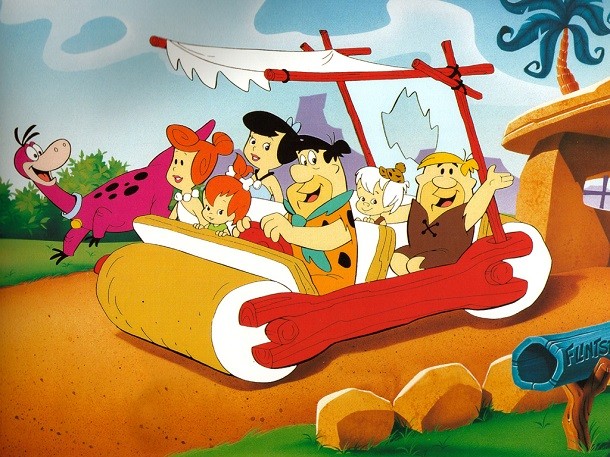 Source: University of Alberta, Image: Bill Brown via Picasa Web
Source: University of Alberta, Image: Bill Brown via Picasa Web The first dinosaur to appear in “The Flintstones” opening sequence was long identified as a Brontosaurus. But this is a dinosaur myth! There was never a dinosaur like the Brontosaurus. Paleontologists incorrectly put the head of a Camarasaurus on the body of an Apatosaurus.
Some dinosaurs couldn't carry their own weight
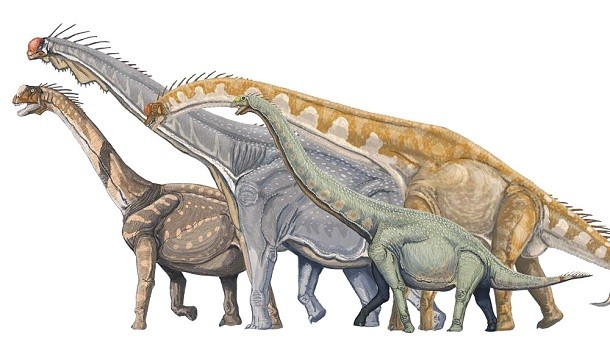 Source: University of Alberta, Image: Wikipedia
Source: University of Alberta, Image: Wikipedia Massive sauropods which did exist (in contrast to the fake Brontosaurus from #11) included the Apatosaurus and Brachiosaurus. Some juvenile assumptions purported that such heavy creatures – weighing 36,156 pounds (16,400 kg) and up to 124,120 pounds (56,300 kg), respectively – could not carry their own body weight and had to maneuver in shallow water. These early assumptions have been disproven by findings of the sauropods’ well-developed and muscular bodies. (For context, the highest assumption for a Brachiosaurus’ weight is equal to over eight full-grown African elephants.)
Mammals and dinosaurs lived in different times
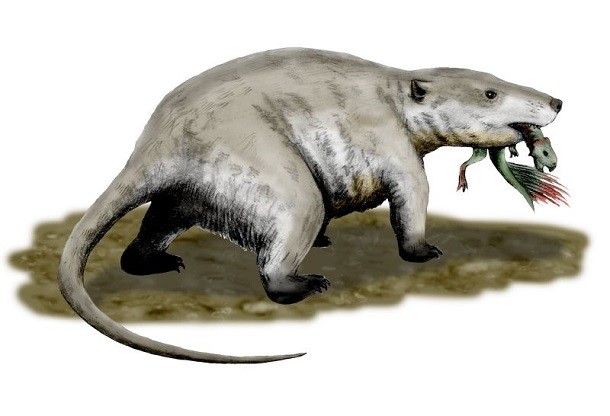 Source: Smithsonian, Image: Wikipedia
Source: Smithsonian, Image: Wikipedia Both mammals and dinosaurs came onto the scene during the Late Triassic Period, starting about 237 million years ago. And, contrary to some thoughts, mammals did not eat dinosaur eggs en masse to threaten their extinction.
Dinosaurs were slow creatures
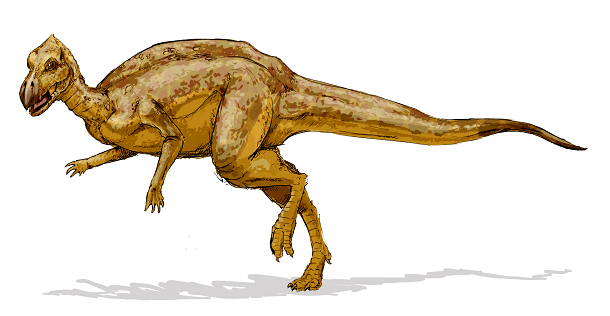 Source: University of Alberta, Image: Wikipedia
Source: University of Alberta, Image: Wikipedia A common dinosaur myth is that the creatures were slow-moving and dragged their tails on the ground. In fact, most dinosaurs were athletic animals and even quite nimble!
Oil comes from dinosaurs
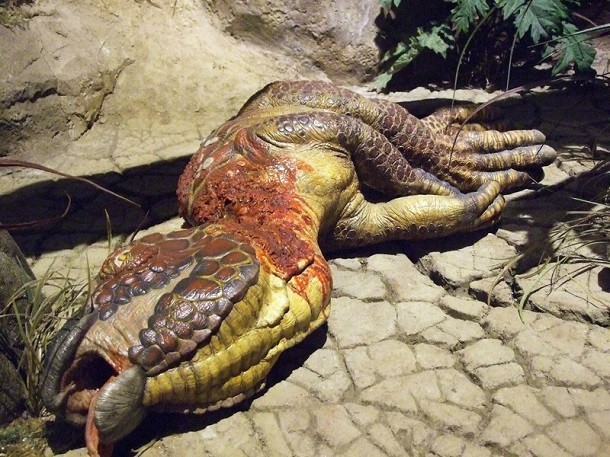 Source: Louisiana Department of Natural Resources, Image: Joseph Lee Novak via Flickr
Source: Louisiana Department of Natural Resources, Image: Joseph Lee Novak via Flickr Here’s another dinosaur misconception! Some people think when a dinosaur died naturally or in a landslide (or other natural disaster), it was covered in sediment and turned to oil over many millions of years. The fact is that dino flesh would have rapidly decayed or been scavenged way before it could have been converted.
Dinosaurs are all extinct
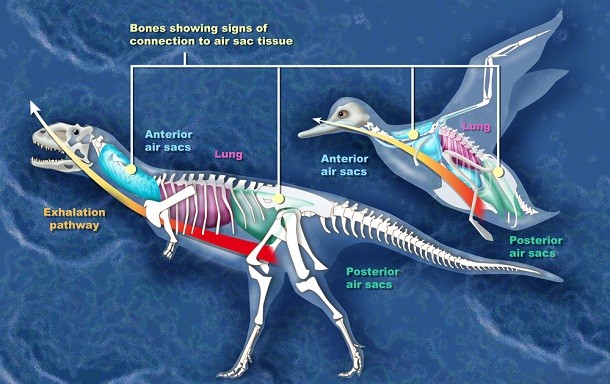 Source: Smithsonian, Image: Wikipedia
Source: Smithsonian, Image: Wikipedia Well, not exactly. Whereas all the T-Rexs’ and sauropods have long been buried, one of eight major dinosaur groups – theropods – survived the Cretaceous-Paleogene extinction event and one of the over 40 subgroups of theropods evolved into many birds we know today.
Dinosaurs were all huge creatures
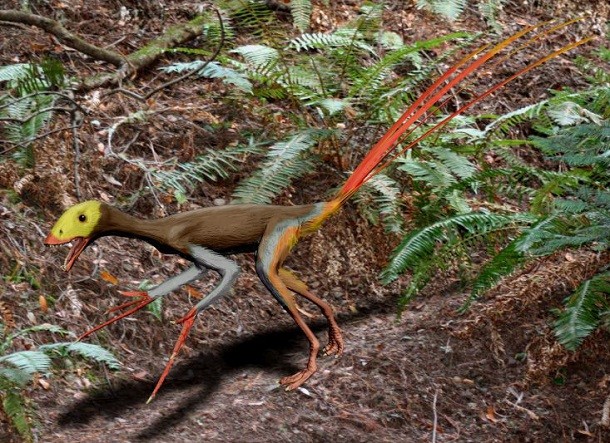 Source: Dr. Dave Hone via The Guardian, Image: Wikimedia
Source: Dr. Dave Hone via The Guardian, Image: Wikimedia Though the dinosaurs which make it onto the silver screen and capture our attention are generally the larger, terrifying beasts, plenty of dinosaurs were quite small. Some of the smallest dinosaurs paleontologists have identified weighed only a half-pound (200 g). One such example, Epidexipteryx, weighed about 5.8 ounces (164 g) and was about the size of an adult human foot.
Dinosaurs were poor swimmers
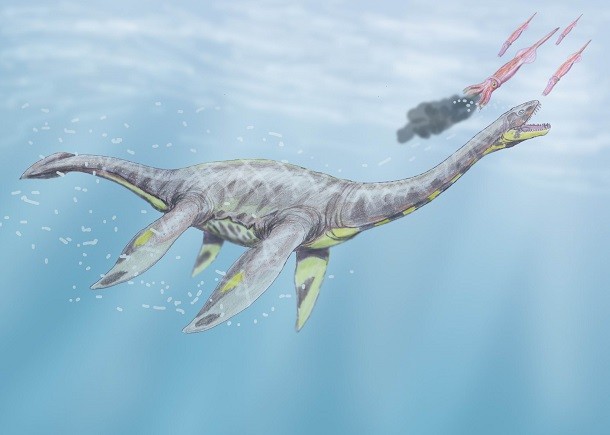 Source: University of Alberta, Image: Wikipedia
Source: University of Alberta, Image: Wikipedia Many people think dinosaurs which roamed the lands were too big and cumbersome to be good swimmers, but an international team of researchers have found evidence in China of nimble two-legged dinosaurs swimming in rivers.
T-Rex arms were useless
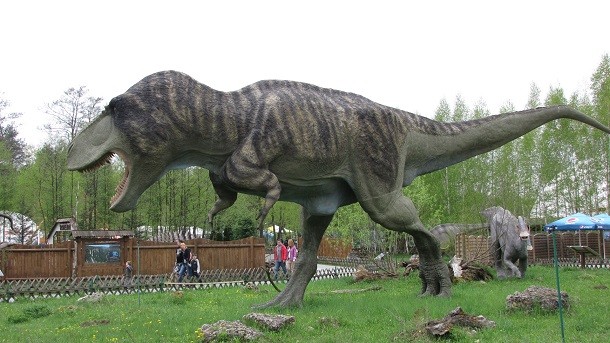 Source: University of Alberta, Image: Wikipedia
Source: University of Alberta, Image: Wikipedia Looking at the size of a Tyrannosaurus Rex, it seems like a creature which only focused on squats at the gym and always forgot arm day, right? This is another dinosaur myth! Though their arms weren’t as terrifying as their massive jaws, each T-Rex arm could have handled objects and animals up to a few hundreds of pounds with ease.
Jurassic Park dinosaurs are from the Jurassic period
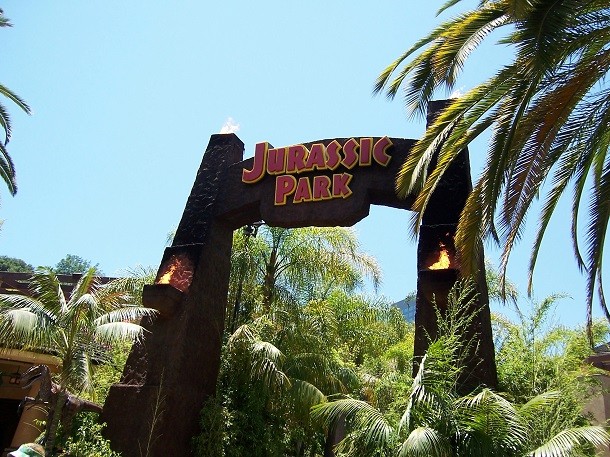 Source: Smithsonian, Image: Wikimedia
Source: Smithsonian, Image: Wikimedia “Jurassic Park” is without-question one of the most popular dinosaur films ever made. But even its name is wrong. The popular dinos from the film – including the T-Rex, Triceratops, and Velociraptor – didn’t even live in the Jurassic Period (201.3-145 million years ago). They were all terrors of the Cretaceous period immediately following the Jurassic period.
Dinosaur means "terrible lizard"
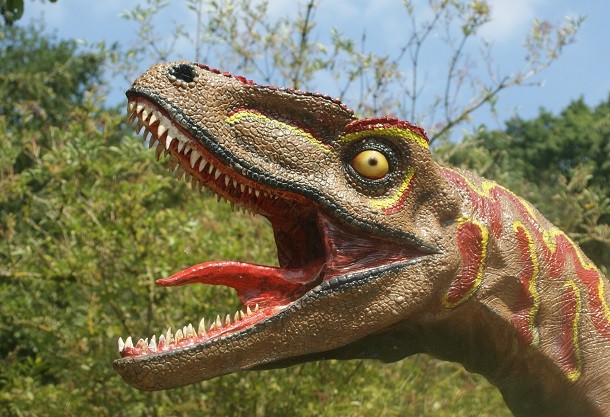 Source: Smithsonian, Image: spencer77 via Flickr
Source: Smithsonian, Image: spencer77 via Flickr First off, dinosaurs aren’t lizards, they’re reptiles. Secondly, the Greek word “deinos” – which paleontologist Richard Owen used in naming dinosaurs in 1842 – means “fearfully great.” Simplifications over time have reduced it to “terrible”.



























